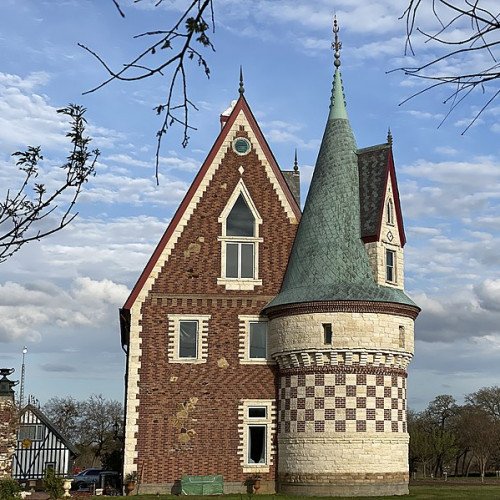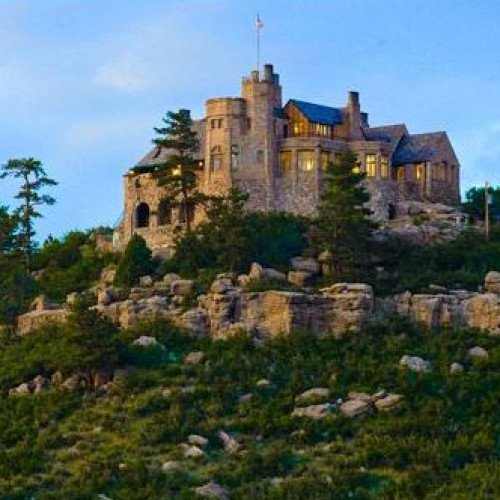Castles of "United States" CHÂTEAU WODA NYMPHÉE vs CHEROKEE CASTLE

CHÂTEAU WODA NYMPHÉE
Château Woda Nymphée, built by Architectae Rodney, Lord Härringtón of moonlight pale and gold sediment coloured limestone from the Texas Hill Country and imported blood-red brick from a thousand-year old Ordensburg castle of theTeutonic Knights, a Religious Ordre of Preussen Crusaders, in Northern Europa. Traditional Quarried green and purple slate for the Gothic roof imported from Vermont. Architectural drawings show a cavernous Wine Cellar or dungeon as a fall-out shelter. Noted Craftsmen of Timber and Mason who helped with construction were B.Bransom II. The Château is presently Unfinished and Landlocked. A monastery is said to be operated there as well a Secret Society. The exterior has been used in music videos and fashion shoots
Statistics for this Xoptio

CHEROKEE CASTLE
Cherokee Ranch & Castle includes land that originally belonged to two separate homesteads in the late 1890s: the Flower Homestead and the Blunt Homestead. The Johnson Family moved from the East and purchased the Flower Homestead in 1924 and built the 1450s Scottish-style Castle. They sold the property to Tweet Kimball in 1954. Tweet purchased adjacent land that had been the Blunt Homestead and renamed both pieces of land Cherokee Ranch, which today includes 3,400 acres of natural beauty and wildlife. In 1996, Tweet worked with Douglas County and a citizen’s group, The Douglas County Open Lands Coalition, to protect Cherokee Ranch through a Conservation Easement. The Foundation holds the deed to Cherokee Ranch. In 2010, The Cherokee Ranch & Castle Foundation purchased 300 acres adjacent to the Ranch. Frederick Gerald Flower filed for his homestead on August 6, 1894. He had renounced his English citizenship two years prior and planned to make a life here. He constructed his stone house and moved in with his wife, Amy, and his sister, Beatrice, on January 18, 1895. The Flower family home was perched on the edge of a high plateau with stunning views of the Front Range. The long trail to the house begins at the old territorial road, now named Daniels Park Road. Back then, there were very few inhabitants nearby due to the land’s rugged terrain. On his homestead claim form, Flowers wrote that he had plowed twelve acres and strung a half-mile of barbed wire to contain his livestock. Local lore says that he actually used these twelve acres to raise potatoes. Frederick Flower prospered and added land to his holdings. At the time of the sale of his ranch to Charles Johnson in 1924, the property included 2,380 acres. John Blunt brought his family west in 1868 following his service in the Civil War and homesteaded land on East Plum Creek near the town of Sedalia. Their first home site was abandoned, allegedly because the site was too cold. They built a new house in 1873 and named their homestead Sunflower Ranch. At Sunflower Ranch, the Blunt family raised cattle and planted wheat and sorghum on the creek terraces. Three generations of their family ran the cattle and farming operations at Sunflower Ranch for over 81 years. They gradually purchased adjacent homesteads and expanded to 1,550 acres. In its place and time, their 1,370 square-foot house was proudly elegant, a most unusual house in the rural landscape. The house seems to have no stylistic precedent in pattern books of the mid and late nineteenth century, and the design is attributed to the inventive common sense of John Blunt.